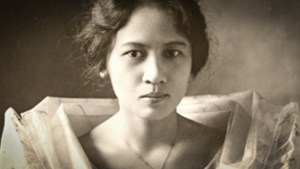Too often we see feminism as an ideology at odds with the teachings of the Church. It’s good to remember, however, that there were and still are many types of feminism: radical, liberal, postmodern, Marxist, and academic. The “new feminism” that John Paul II called for has a particular place in our modern culture.
A short history of feminism
Researchers say feminism began as early as the 18th century. In those days, it was mostly a sociopolitical movement aimed at equalizing the rights of men and women at work and education. The name itself was most likely used for the first time by Charles Fourier in 1837.
The first big wave of feminism began roughly between 1890 and 1920, and lasted until the early 1960s. Its most important goal was establishing equal rights for men and women, and English and American suffragists played a leading role. Their efforts led to voting rights for women in 1920 in the US, and in 1918 in Poland. By comparison, women in Switzerland received their right to vote only in 1971, and in Saudi Arabia in 2015.

Read more:
How being a feminist brought me closer to God
The second wave of feminism began in the 1960s and continued into the ’70s. This time, the main goal was equal pay, sexual freedom, and/or the right to abortion. Motherhood and marriage were considered a form of slavery. The most famous feminist of that period is probably Simone de Beauvoir, the author of The Second Sex.
And then, finally, came the third wave, beginning in the 1980s. Inspired by the LGBT movement and environmentalism, it took into consideration racial, economic, and religious issues.
Edith Stein: No woman is just a woman
If we’re going to talk about feminism, we can’t ignore Edith Stein, also known as St. Teresa Benedicta of the Cross. History remembers her as an eminent philosopher, and her lectures, articles, and essays about women from 1928 to 1932 can’t be forgotten. She emphasized that “no woman is just a woman.” She tried to examine women’s nature from the moment of creation and show that each woman is a creature carefully planned by God and called by Him to specific tasks, regardless of the times in which she lives and where she comes from. Aside from feminine gifts such as the ability to look holistically at another person, and an innate empathy and desire to help, every woman receives entirely individual gifts and talents as a person, which she can use at work, and as a wife, mother, nun, or single person.

Read more:
After John Paul II, Does the Church Need a New Feminism?
Stein was ahead of her time, and she warned against the direction in which the emancipation movement was going. She emphasized that women’s goal should not be to become like men, but to live in harmony with their nature and to fulfill their calling.
John Paul II and his new feminism
Today we call Edith Stein a precursor of the new feminism, which John Paul II briefly outlined in the encyclical Evangelium Vitae, “The Gospel of Life,” in section 99. It is not certain if the pope relied on the texts of St. Teresa Benedicta, but their views on the subject seem to align greatly. John Paul II wrote:
In transforming culture so that it supports life, women occupy a place, in thought and action, which is unique and decisive. It depends on them to promote a “new feminism” which rejects the temptation of imitating models of “male domination,” in order to acknowledge and affirm the true genius of women in every aspect of the life of society and overcome all discrimination, violence, and exploitation. (…) You are called to bear witness to the meaning of genuine love, of that gift of self and of that acceptance of others which are present in a special way in the relationship of husband and wife, but which ought also to be at the heart of every other interpersonal relationship.
This is not the only papal document concerning women. The first one was the apostolic letter Mulieris Dignitatem, “On the Dignity and Vocation of Women,” issued in 1988 during the Marian Year. John Paul II also wrote about femininity in the apostolic letter Ordinatio Sacerdotalis, “Priestly Ordination,” in 1994 and in the letter A Ciascuna di Voi, “To Each of You,” directed to all women in the world for the UN World Conference in Beijing in 1995.
The pope emphasized that a woman’s dignity and responsibility are equal to the dignity and responsibility of a man, and that the sexes’ equality is fulfilled in mutual dedication. He also wrote that a woman’s maternal and family duties and her professional tasks should complement each other, and that only in this way will cultural and social development be complete. If a woman decides to work at home, she should be supported in that choice.

Read more:
A Filipina who promoted the feminine genius before John Paul II did
It is difficult, however, to give a specific definition of new feminism. Michele M. Schumacher, a theologian and one of the main researchers of this trend, understands it as the “task — or mission — of outlining exactly what differentiates a woman from a man, and thus how she complements him, and visa versa; it also has the goal of promoting authentic human and Christian culture.” Old and new feminism both agree that we need to fight all kinds of violence, exploitation, and discrimination against women, which are a legacy of sin.
The feminine genius
The new feminism gives most attention to the feminine genius, which points out that each woman has a special predisposition and is capable of enriching the world according to her own vocation. It encourages a woman to recognize her talents, and it shows her potential for building a civilization of love. At the same time, the new feminism reminds us of the equality of men and women. It is not that a woman should be subject to a man, but that both should be subject to God. They are both created in His image and likeness; “both are equally capable of sharing Divine truth and love in the Holy Spirit,” John Paul II explains in Mulieris dignitatem.
” …the woman must ‘help’ the man — and in turn, he must help her — first of all by the very fact of their ‘being human persons.’ In a certain sense, this enables man and woman to discover their humanity ever anew and to confirm its whole meaning. We can easily understand that — on this fundamental level — it is a question of a ‘help’ on the part of both, and at the same time a mutual ‘help.’ To be human means to be called to interpersonal communion.” (Mulieris dignitatem, 7).
This article was originally published in the Polish edition of Aleteia and has been translated and/or adapted here for English-speaking readers.

